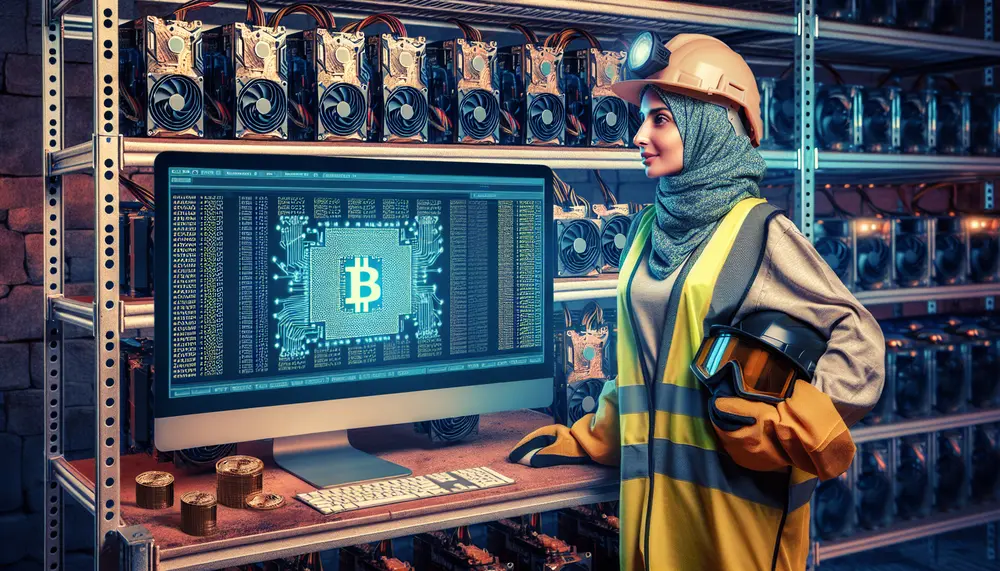Solo Mining
Solo Mining
Understanding Solo Mining
If you're interested in Bitcoin mining, you've probably come across Solo Mining. Not sure what it means? Don't worry, we'll explain it in simple terms right here.
Solo Mining is the process where a miner performs the mining tasks individually, without joining a mining pool. Instead of sharing the workload with others, the miner takes on the challenge by themselves.
The Basics of Solo Mining
More specifically, in the context of Bitcoin Mining, Solo Mining refers to the act of participating in the Bitcoin network individually. Each miner independently attempts to solve complex mathematical puzzles in order to validate a block of Bitcoin transactions.
Unlike Pool Mining, where multiple miners combine their hash power to solve the puzzles, Solo Miners need enough hash power to compete against the entire network of miners. The difficulty of solving these puzzles is one reason why many miners choose to join a pool instead of mining solo.
The Pros and Cons of Solo Mining
As expected, there are advantages and disadvantages to Solo Mining. It can be a high-risk, high-reward approach to Mining.
The obvious benefit is that if you successfully validate a block, the entire block reward is yours. With Bitcoin, this could mean as much as 6.25 Bitcoins (plus transaction fees). It's quite the payday!
The major downside, however, is the difficulty and cost. The competition is fierce and the chances of solving a block first are rather slim unless you have significant mining power. Additionally, the operation costs, such as electricity and equipment, can be prohibitive.
Should You Try Solo Mining?
Deciding whether to engage in Solo Mining or not depends on your individual circumstances. Those with ample resources and a high tolerance for risk might find it an appealing challenge. On the other hand, miners with limited resources might prefer to share the costs and rewards with others in a mining pool.
Remember, mining is not the only way to acquire Bitcoin. You can also buy Bitcoin on an exchange or earn it through certain jobs and services. There are many ways to get involved in the exciting world of Bitcoin, and Solo Mining is just one of them.
Blog Posts with the term: Solo Mining

This guide simplifies Monero solo mining with XMRig, covering setup and optimization to mine efficiently. It explains the benefits of using XMRig, necessary hardware requirements, and how to set up a Monero wallet for secure fund management....

Cloud mining allows individuals to lease processing power from remote data centers for cryptocurrency mining, offering convenience and lower upfront costs but potentially reduced earnings and risks of scams. Hardware mining involves owning equipment with greater control and profit potential...

Monero mining on AMD Ryzen CPUs is popular due to their high performance and efficiency; this article provides a guide for optimizing these processors, covering hardware selection, BIOS settings, and software configuration to maximize mining profitability. Key considerations include core...

Bitcoin mining pools are groups of miners who combine their computing power to mine Bitcoin blocks and share the rewards. Joining a mining pool increases the frequency of payouts and reduces the volatility of the mining process, making it a...

Choosing between mining pools and solo mining involves weighing the benefits of shared resources, steady income, and community support against the autonomy, full reward retention, and privacy offered by going it alone; each option has its own set of challenges...

The article provides a comprehensive guide on selecting the right cryptocurrency mining pools, emphasizing understanding basic concepts like pool types and benefits such as increased reward chances and steady income. It also highlights key features to consider, including payout schemes,...

The article compares solo and pool mining for Monero, detailing their respective advantages and disadvantages. Solo mining offers full block rewards but is resource-intensive with inconsistent payouts, while pool mining provides more consistent earnings by combining computational power at the...

USDT mining pools allow miners to combine computational power for more consistent rewards, with benefits including increased earnings and reduced costs. Key factors in choosing a pool include size, fees, payout structure, reputation, location of servers, support community, and security...

This guide provides a step-by-step tutorial for building a powerful PC specifically designed for Dogecoin mining, covering essential hardware components like GPUs, CPUs, motherboards, PSUs, RAM, storage solutions, and cooling systems. It also explains the basics of Dogecoin mining including...

Ethereum mining can be profitable but carries risks, including scams that lead to financial losses. This article explains how to identify common Ethereum mining pool scams and provides tips for protecting your investments by recognizing red flags such as unrealistic...

The Verus Hashrate Calculator is a tool for estimating potential earnings and costs in VerusCoin mining, emphasizing the importance of choosing appropriate hardware and software while understanding network parameters to optimize profitability. It guides users through inputting data like hashrate,...

A mining pool node is a server that coordinates multiple miners to solve cryptographic puzzles collectively, increasing their chances of earning rewards which are shared based on contribution; setting one up requires reliable hardware, stable internet, compatible software, and technical...

Understanding your objectives for Bitcoin mining is crucial, as it influences decisions on hardware, location, and risk management; key cost factors include electricity rates, cooling needs, maintenance expenses, and network difficulty. Efficient hardware can reduce energy costs significantly but often...

The article explains the importance of understanding Monero mining pools and their hashrate distribution, highlighting how these factors affect network security and decentralization. It also provides a guide to selecting top Monero mining pools in 2024 based on criteria such...

